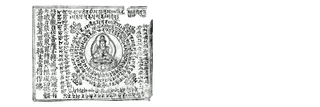Mantra and Dharani in the Religious Traditions of Buddhism, Jainism and Hinduism

While the great religious, philosophical and narrative works produced in India are widely known for the most part, and have enjoyed long traditons of close study, a different body of literature—concerned with protection, merit and the invocation of auspicious power—has received much less attention. Known collectively as mantra and dhāraṇi, these texts have been recited and copied for centuries and are a key part of lived religion in all parts of Asia. Often thought to have no actual or literal meaning, they testify, nonetheless, to the profound and far-reaching exchange of people, ideas and ritual practices across Asia. The texts not only add to our knowledge of a special category of literature and the theoretical tools that can be deployed to understand them, but show that hermeneutics and text-ritual practice evolved in a vast interactive network that spanned regions, languages, kingdoms and cultures. Religious interaction over macro-regions is perceived normally as a relatively modern phenomena, but the mantra and dhāraṇi materials shows that such encounters go back to at least the sixth century CE.
Affiliated Persons


